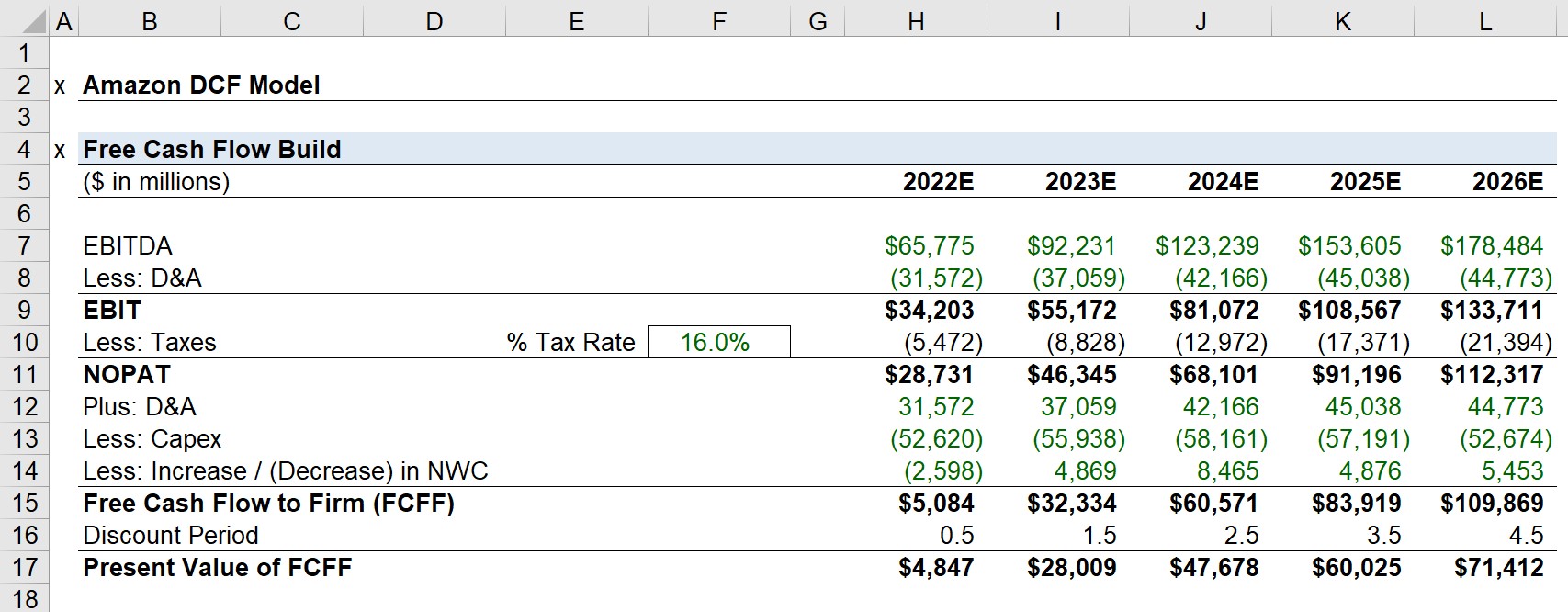Home>Finance>What Is The Revised Equity Beta For Zonk Based On The New Capital Structure?


Finance
What Is The Revised Equity Beta For Zonk Based On The New Capital Structure?
Modified: December 30, 2023
Discover the revised equity beta for Zonk's new capital structure and its implications for finance. Stay ahead with this essential financial analysis.
(Many of the links in this article redirect to a specific reviewed product. Your purchase of these products through affiliate links helps to generate commission for LiveWell, at no extra cost. Learn more)
Table of Contents
Introduction
Welcome to the world of finance, where understanding the concept of equity beta is crucial in evaluating investment opportunities. In this article, we will dive into the topic of equity beta and explore how the revised equity beta for Zonk is calculated based on its new capital structure.
Equity beta is a financial metric used to measure the sensitivity of a company’s stock returns to the overall market movements. It is a key parameter in the Capital Asset Pricing Model (CAPM), which is widely used to determine the expected return on an investment.
In simple terms, equity beta reflects the level of risk associated with investing in a particular company’s stock compared to the overall market. A beta of less than 1 indicates that the stock is less volatile than the market, while a beta greater than 1 suggests that the stock is more volatile.
Now, let’s turn our attention to Zonk, a fictional company operating in a dynamic market. Zonk has recently made changes to its capital structure, which has a direct impact on its equity beta. By understanding the implications of the new capital structure, we can assess the level of risk associated with investing in Zonk’s stock.
In the upcoming sections, we will explore Zonk’s capital structure, calculate the revised equity beta, and analyze the impact of the changes. So, let’s strap in and demystify the world of equity beta and capital structure!
Overview of Equity Beta
Before we delve into the specifics of Zonk’s revised equity beta, let’s establish a solid understanding of what equity beta represents and its significance in the financial world.
Equity beta measures the volatility of a company’s stock in relation to the overall market. It provides investors with an insight into how much a stock price is likely to fluctuate, given changes in the broader market. By assessing equity beta, investors can assess and compare the risk associated with different investment options.
The concept of equity beta is rooted in the Capital Asset Pricing Model (CAPM), a widely used tool for determining the expected return on an investment. According to the CAPM, the expected return of an investment can be calculated by adding the risk-free rate of return to the product of equity beta and the market risk premium.
The market risk premium represents the additional return that investors expect for taking on the risk associated with investing in the stock market, compared to a risk-free investment. Equity beta, on the other hand, measures how much a stock’s returns move in relation to the overall market. A company with a higher beta is generally considered to have higher risk, as its stock prices tend to be more sensitive to market volatility.
By analyzing equity beta, investors can make informed decisions about portfolio diversification. For example, if an investor already holds stocks with high betas, they may seek to balance their portfolio by adding stocks with lower betas to reduce overall risk.
It’s important to note that equity beta is not a static metric. It can change over time due to factors such as changes in the company’s capital structure, industry conditions, or market dynamics. This brings us to the next section, where we will explore how changes in Zonk’s capital structure influence its equity beta.
Understanding Zonk’s Capital Structure
Before we proceed to calculate the revised equity beta for Zonk, let’s take a close look at its capital structure. A company’s capital structure refers to the mix of debt and equity financing it utilizes to fund its operations and growth.
Typically, a company’s capital structure consists of two main components: debt and equity. Debt refers to the money borrowed by the company, usually in the form of loans or bonds, which it is obligated to repay over a specified period with interest. Equity, on the other hand, represents the ownership stake in the company held by shareholders, who have a claim on the company’s assets and earnings.
Capital structure decisions have significant implications for a company’s financial health and risk profile. Companies with high levels of debt may face higher interest payments, resulting in increased financial risk. Conversely, companies with a higher proportion of equity financing may have lower interest expenses but may dilute shareholder ownership.
In the case of Zonk, recent changes have been made to its capital structure. For example, Zonk has issued new shares of stock, increasing the number of outstanding shares. Additionally, the company has also taken on additional debt to finance its expansion plans.
These changes in the capital structure have implications for Zonk’s equity beta. An increase in the proportion of equity financing, such as through the issuance of new shares, may lower the equity beta. This is because a larger equity base may lead to a lower correlation between Zonk’s stock returns and the overall market.
Conversely, taking on more debt can increase the financial risk of the company, potentially leading to higher equity beta. This is because increased debt levels may result in higher interest obligations, which can amplify the volatility of the company’s earnings and, consequently, its stock price.
By understanding Zonk’s capital structure and the recent changes made to it, we can now move on to calculating the revised equity beta based on these new dynamics.
Calculation of Revised Equity Beta
Now that we have a grasp of Zonk’s capital structure, let’s calculate the revised equity beta based on the new changes. The calculation of equity beta involves comparing the historical returns of a company’s stock to the overall market returns.
To begin the calculation, we need the historical returns of Zonk’s stock and the market returns over a specific period of time. This data can be obtained from financial databases or market indices. It’s important to ensure that the time period selected is relevant and representative of the company’s performance.
Once we have the historical returns, we can calculate the covariance between Zonk’s stock returns and the market returns. The covariance measures the extent to which the stock returns move in relation to the market returns. A higher covariance indicates a stronger relationship, while a lower covariance suggests a weaker relationship.
Next, we calculate the variance of the market returns, which represents the overall volatility of the market. The variance captures the dispersion of the market returns around the average return. A higher variance implies greater market volatility.
Using these calculations, we can then determine the beta coefficient, which is a measure of the stock’s sensitivity to market movements. The beta is derived by dividing the covariance by the variance of the market returns.
However, given Zonk’s new capital structure, we need to adjust the calculation to account for the changes. For example, if Zonk issued new shares of stock, we need to incorporate the impact of the increased equity base on the beta calculation. Similarly, if the company took on additional debt, we need to consider the effect of the increased financial risk.
Incorporating these adjustments can be complex and may require the expertise of financial analysts or the use of specialized software. The revised equity beta reflects the updated risk profile of the company based on the changes in its capital structure.
With the revised equity beta in hand, investors can have a more accurate understanding of the level of risk associated with investing in Zonk’s stock. They can use this information to assess the potential returns and make informed investment decisions.
Impact of the New Capital Structure on Equity Beta
The changes in Zonk’s capital structure have a direct impact on the company’s equity beta. By altering the mix of debt and equity financing, Zonk’s risk profile and stock price volatility can be influenced.
Let’s first consider the impact of issuing new shares. When Zonk issues additional shares of stock, the equity base of the company increases. This larger equity base can result in a dilution of ownership and may lead to a decrease in equity beta. A lower equity beta suggests that the stock is less volatile relative to the market.
On the other hand, taking on additional debt can have the opposite effect. Higher debt levels can increase the financial risk of the company, leading to higher equity beta. This is because the increased interest obligations can amplify the volatility of earnings and stock price.
It’s important to note that the impact of changes in the capital structure on equity beta can vary based on other factors such as industry conditions and market dynamics. For example, in a stable or less volatile market, the influence of changes in the capital structure on equity beta may be less pronounced. Conversely, in a highly volatile market, even small changes in the capital structure can have a significant impact on equity beta.
By assessing the impact of the new capital structure on Zonk’s equity beta, investors can gain insights into the level of risk associated with investing in the company. A higher equity beta indicates a higher level of risk, while a lower equity beta suggests a lower level of risk.
Investors should consider their risk tolerance and investment objectives when evaluating the impact of the new capital structure on Zonk’s equity beta. Some investors may be willing to take on higher risk for the potential of higher returns, while others may prefer lower-risk investments.
Overall, understanding the relationship between changes in the capital structure and equity beta is essential for investors seeking to make informed decisions. By analyzing the impact of Zonk’s new capital structure, investors can better assess the risk and potential returns of investing in the company’s stock.
Conclusion
In conclusion, understanding equity beta and its relationship to a company’s capital structure is crucial for investors looking to assess risk and make informed investment decisions. In the case of Zonk, changes in its capital structure can impact its equity beta, providing insights into the level of risk associated with investing in the company’s stock.
Equity beta measures a stock’s sensitivity to market movements, with a higher beta indicating higher volatility and risk. By calculating the revised equity beta based on the new capital structure, investors can have a more accurate assessment of the level of risk associated with investing in Zonk’s stock.
The changes in Zonk’s capital structure, such as the issuance of new shares or taking on additional debt, can influence equity beta. Increasing the equity base can lower equity beta, indicating reduced volatility, while increased debt levels may lead to higher equity beta, signaling higher risk.
It’s essential for investors to consider their risk tolerance and investment objectives when evaluating the impact of changes in the capital structure on equity beta. Each investor’s risk appetite may differ, and a thorough understanding of the relationship between capital structure and equity beta can aid in making well-informed investment decisions.
In summary, the revised equity beta provides a measure of the risk associated with investing in Zonk’s stock based on the recent changes in its capital structure. By factoring in the impact of these changes, investors can better assess the potential returns and risk associated with investing in Zonk.
In the dynamic world of finance, understanding equity beta and its connection to capital structure is pivotal for investors seeking to navigate the investment landscape. By staying informed and analyzing the impact of changes in the capital structure, investors can make sound investment choices and increase their chances of achieving their financial goals.














